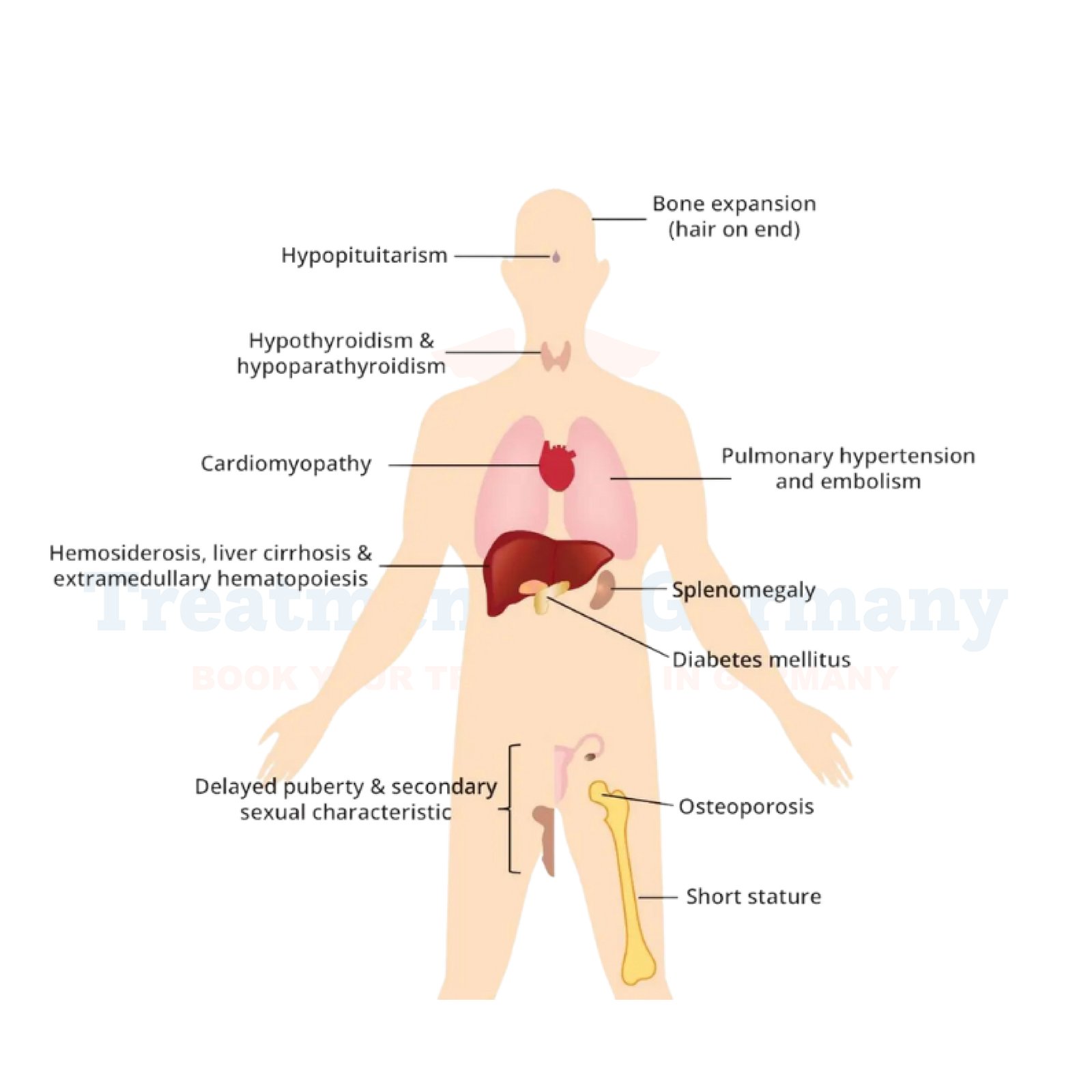What is Beta Thalassemia?
Beta Thalassemia is a genetic blood disorder characterized by reduced production of hemoglobin, the protein in red blood cells that carries oxygen throughout the body.
This condition occurs due to mutations in the HBB gene, which provides instructions for making the beta-globin protein. Without enough beta-globin, red blood cells are unable to function properly, leading to anemia and other health complications.
Side Effects of Beta Thalassemia
The severity of symptoms can vary widely, depending on the type of beta thalassemia an individual has. Common symptoms include:
- Anemia: Fatigue, weakness, and pale skin due to a shortage of healthy red blood cells.
- Bone Deformities: Overgrowth of bones in the face and skull (facial bone deformities) and in other parts of the body.
- Enlarged Spleen: An enlarged spleen (splenomegaly) can occur, which can make anemia worse.
- Delayed Growth and Development: In children, beta thalassemia can delay growth and development.
How is Beta Thalassemia Diagnosed?
Diagnosis of beta thalassemia often begins with a blood test to measure the levels of hemoglobin and other markers. If thalassemia is suspected, additional tests may include:
- Genetic Testing: To identify specific mutations in the HBB gene.
- Complete Blood Count (CBC): To assess the size, number, and maturity of red blood cells.
- Iron Studies: To differentiate thalassemia from iron deficiency anemia.
Potential Treatment of Beta Thalassemia
While there is no cure for beta thalassemia, treatments aim to manage symptoms and complications, including:
- Blood Transfusions: Regular transfusions provide healthy red blood cells to improve oxygen transport and reduce symptoms of anemia.
- Iron Chelation Therapy: Given to remove excess iron from the body, which can accumulate from frequent blood transfusions.
- Bone Marrow Transplant: For some patients, a bone marrow transplant offers a potential cure by replacing faulty bone marrow with healthy stem cells that can produce normal hemoglobin.
👉 Contact us for further information and receive a complimentary consultation.

.webp)
.webp)
 (1).webp)
 (1).webp)

.webp)
.webp)
 (1).webp)
 (1).webp)
